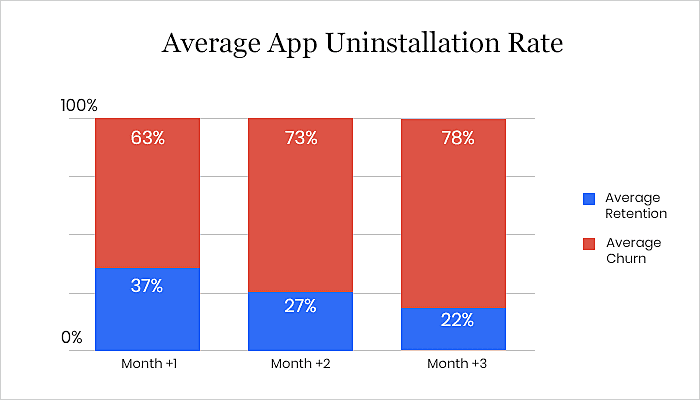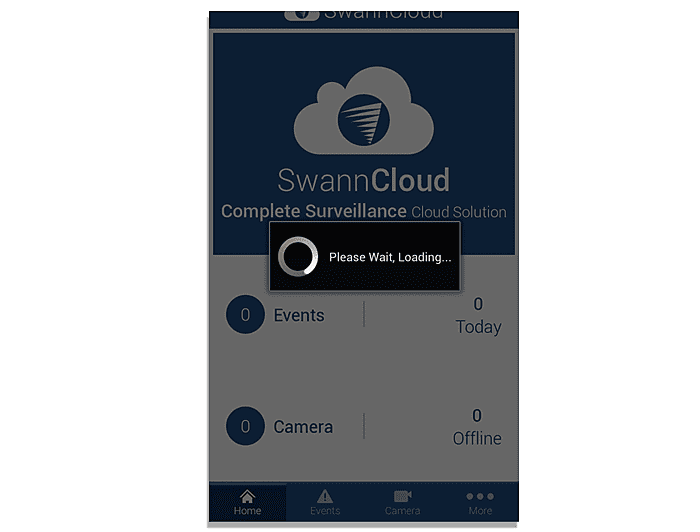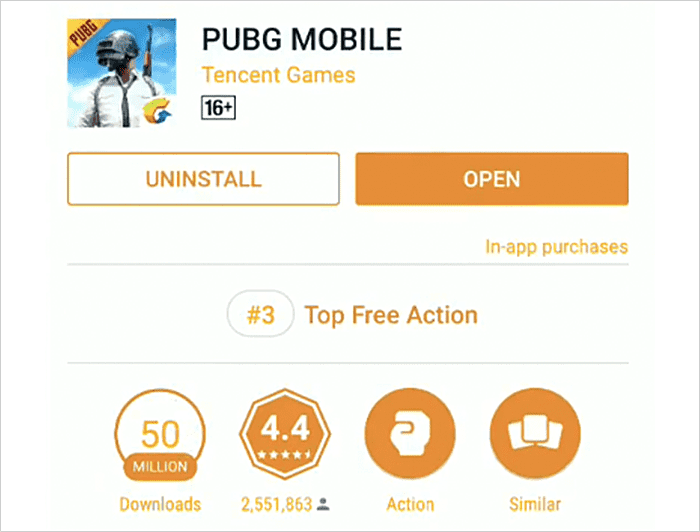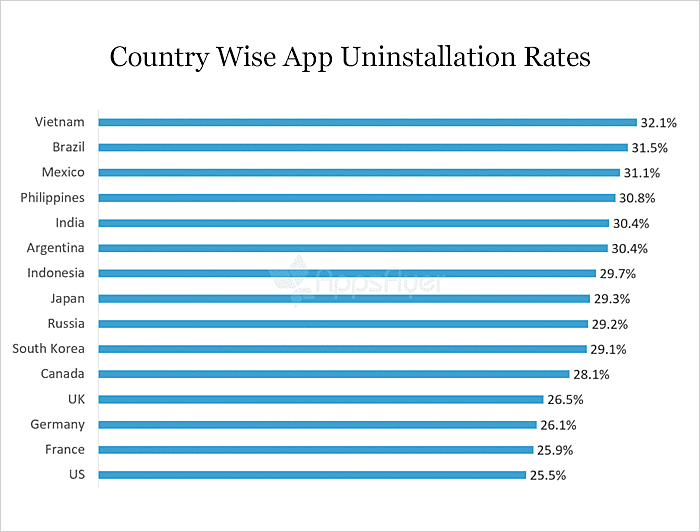
-
Reasons for App Uninstallation and Their Fixes
- Problem #1 - Bothersome Notifications
- Possible Fix
- Problem #2 - Complicated Registration Process
- Possible Fix:
- Problem #3 - Long Loading Time
- Possible Fix:
- Problem #4 - Dull UI/UX
- Possible Fix:
- Problem #5 - ‘Rate the App’ Prompts
- Problem #6 - Privacy Invasion
- Problem #7. Too many Updates
- Problem #8. Fault in Encrypted Connections
- Additional Ways to Reduce App Uninstall Rate and Increase App Retention
- Global App Uninstall Rate
- The Final Word

Since the last decade, the app market has expanded exponentially. Every day, almost 6000 apps are added to the app stores. This makes the life of a new app a little tough to sustain the cut-throat competition.
Once an app is rolled out in the market, it’s core purpose is to acquire as many as users as it can and also engage the existing users more. It is easier said than done, though. Mobile app uninstallation rates have increased by 80 - 85%. Most of the users uninstall apps immediately when they’re first used or if they are left unused for a week.
An average app retention rate is the best determinant to measure an app’s success rate. Some apps may perform well right after their release, while most of the apps don’t survive long due to the ever-increasing uninstallations.
A survey by Localytics states that about 78% of users uninstall an app within 90 days.

Credits: Localytics
To prevent users from uninstalling the app, it’s crucial to understand why apps get uninstalled in the first place by analyzing the mobile app performance metrics.
Reasons for App Uninstallation and Their Fixes
Are you wondering ‘how to reduce app uninstall rate?’ Here are the top reasons for app uninstallation along with the ways to decrease this rate.
Problem #1 - Bothersome Notifications
We all know what significance app notification holds, but when they find out that it's a recurring process done by the push notification service providers, they get irritated. This is the first reason where customers are compelled to uninstall the app, regardless of whether they are using it or not.
This gets even worse when the mobile app gets the freedom to send out push notifications even when the user has installed the app. This way, the user is bombarded with useless information all day.
As displayed in one of the slides shown in Facebook F8 conference, 71% of users uninstall apps due to annoying, useless notifications.

Possible Fix
Provide the user with an option to disable or silent to notifications, along with a setting to set the frequency. Not everybody is free all the time to go through all notifications.
Too much information will certainly backfire, so it's crucial to dispense only as much information as the user can consume.
Problem #2 - Complicated Registration Process
If the app is difficult to use even before the registration, the user is never going to look at the app again. Even if the app has an impressive interface, it won’t matter if it is integrated with a complicated registration process, which is either too long or has complicated filters.
A long wait during the registration process can severely backfire on the plans of getting more downloads for your app and will increase the mobile app uninstall rate.
Possible Fix:
Simplify the process of registration, thus uncomplicating the life of your users. There is no need to add multiple verification steps. Use the most important ones so that the user doesn’t feel lost in the registration form and gets bored because of its lengthy process.
Problem #3 - Long Loading Time
A user will certainly get tired if they have to refresh an app over and over again. In the present scenario, nobody has any extra time to continuously spend on the crash or freeze of a mobile application. Slow loading time has become a concern for app developers, as it may add to the unpleasant experience. For this, we should know how to have a faster app load time.
At least 80 percent of the users have faced this issue and after a second trial, they surrender and uninstall the app. Whereas, 10-40% of users were ok to try it again later.

The slow load time can be due to multiple factors, three of the most prominent being:
- Multi-tiered infrastructure can take a toll on the servers.
- When two or more operations are requested from the same disk.
- Overcrowded data on an app slows down the servers.
Possible Fix:
App developers and app advertising companies should be rolling out mobile apps only after rigorous testing procedures. The average uninstall rate increases specifically when the issues of freezing arises. It is one of the most critical areas to identify the bugs which cause the freeze or slow down the app.
Problem #4 - Dull UI/UX
Why would a customer want to install an app in the first place?
As per a research report, around 63% of the app downloads in app stores are a result of a random search. Therefore, presenting the app with the best possible design and user-friendly interface is indispensable.
One click should be enough to impress the user with the app’s screens and interface. Else, it won’t take much time before the user uninstalls the app. Ensure that your app is user-friendly and not too complicated.
Possible Fix:
User experience and interface are structured with high-end standards of layout, design, and functionality. Due to this, an app developer maintains these standards as the topmost priority during the designing stage.
By relating with the user, try to give a simpler look which should be universally easy to understand and, moreover, the functional elements have proper clearance. It ensures the creation of a functional and impeccable mobile application, which can surely reduce app uninstall rate.
Problem #5 - ‘Rate the App’ Prompts
There are apps that keep up with an overlay screen that asks the user to rate the app. However, constant reminders can be bothersome. Too many prompts to rate the application when a user is busy or in a hurry are certainly not a good way to welcome the user.
But this isn’t even the worst. There are apps that prompt for an app rating even when the rating has already been done on the same application earlier.

Possible Fix:
Set the function in a more refined manner for the user to rate the application. It should not look like an imposed rating prompt every time the user is using the app. Hiding ‘Rate the App’ prompt in the menu of the app may help reduce its uninstallation rate.
Also, try to invest your time and efforts in making the app remarkable, so that, the user himself is prompted to rate the app rather than being pushed to do so.
Problem #6 - Privacy Invasion
In recent news, Facebook was reported collecting personal details of about 187,000 users from one of its defunct research apps. Interestingly, the app was banned earlier this year by Apple due to violation of rules.
Therefore, privacy of users has become a crucial aspect for the app developers and publishers.
Users are generally not comfortable sharing their private data. They should have control over where and what information the mobile app is extracting. Most of the times users feel suspicious and uninstall apps.
Possible Fix:
Ensure that the app developed by you should not sound suspicious and give an option to the user to skip the private data sharing option, while the user is signing up. The app should offer the option to connect using emails, messenger, etc.
In simple words, stop asking for more than necessary information. It will also in keeping the user engaged on the app and will prevent the app uninstall.
Problem #7. Too many Updates
Nowadays, there are more app updates than ever before. These updates are necessary to add on new features and to fix bugs and patches. But sometimes the number of updates exceeds the expectations of the user and may force the user to uninstall the app.
If a user needs to download a new update almost every time they use the app, they internalize it as part of the app’s loading time which may lead to deletion.
The other reason why a user won’t wish to update the app now and then can be credited to the fact that not everyone has a stable internet connection and especially when the updates are heavy, it becomes difficult for the user to keep the app update every time.

Possible Fix:
Rollout the relevant and necessary updates and try to fix a time interval in which the update is made available. It will help the user know about the update and he can plan accordingly. Top app developers always make sure that the minor updates are released in a package, and not separately to bother the user.
Problem #8. Fault in Encrypted Connections
Everyone needs to safeguard personal data and it make encryption the need of the hour and every app developer needs to understand this very fact, especially, in the wake of the data breaches and cyber attacks that are increasing at an unprecedented pace.
Possible Fix:
From the app development point of view, SSL/TLS connections are necessary to provide encryption for data-in-transit. But if the issue is not resolved till here only; it can create more problems for the developer in case it is left un-optimized because it further results in decreased performance of the app.
The encryption can be fixed by incorporating HTTP/2 and SPDY, which significantly reduces the connection overhead. Other ways may include the use of OpenSSL, session caching, Session Tickets, and more.
Additional Ways to Reduce App Uninstall Rate and Increase App Retention
To help you with increase the app user retention, check out these added approaches and techniques:
1. Build a Community
Many apps offer an in-built user community where people across the globe can come and help each other. Such app communities are an excellent way to get more downloads for the app. It has become a great necessity and should be implemented while designing the app.
Also, community building is a powerful mode to understand user behavior and at the same time, the app publisher can provide the right understandings about the app.

If the app is not viable for an in-app community, then there is an option where the user can connect over various social platforms with a huge number of people who may have a similar interest in your activities and certainly will speed up the marketing of the app.
2. In-App Activities
Creating a chat section to keep your users engaged in some popular activities will lead to mobile app retention. It will also act as a support feature for the users. If the user is stuck somewhere, he knows where to go and can easily get the issue resolved.
By adding in-app activities, you can even stop them from uninstalling your mobile app.
3. Observe and Improve
It is important to keep track of every functionality and response of your app. It is one of the biggest factors to understand customer behavior towards the mobile app. Find out the core reasons behind the deletion of the app and improve on the same.
It will also help you to find out the areas where the app is lacking and what the competitor apps are offering. Once analyzed, the app can be altered suitably.
4. Keep the App Updated
Innovation in the technology pops up something or the other in the app industry and thus, it becomes inevitable for the app developers to update the app immediately. Sometimes, a bug can also call for swift action.
Once you are able to figure out the primary reason for the increased mobile app uninstallation rates, you need to update the app quickly.

At the same time, do remember to avoid frequent updates and stick to maintain the balance between resolving the issues and implementation of the new ideas.
5. Customer Support
Every user comes across issues while using an app. The number of problems can vary from user to user, but hiccups do come. Therefore, it is important that the user should get in touch with the app publisher easily, whether through the app itself, a website or even social media.
The users will stay loyal to the app, if they can easily contact and get a meaningful response from the app developer or publisher and it will significantly reduce the app uninstall rate.
Now, as we have disclosed the reason behind the high rate of app uninstallation and thir possible fixes, let’s take a look at the global app uninstallation rates that will unveil a bigger picture of the mobile app development process.
Global App Uninstall Rate
An app uninstall report shows that the average uninstall rate stays to be around 28% after 28 days of app installation. It means that about three out of ten apps gets installed within 30 days of a download.
It clearly states the fact that a user doesn’t take much time before making up his mind to uninstall an app and thus decreases the mobile app retention rate, as there are already millions of apps available in the app stores.

Credits: Appsflyer
In the above graph, Vietnam tops the chart of countries with the respective app uninstallation rate of 32.1% and closely followed by Brazil and Mexico. Surprisingly, the US has the lowest app uninstallation rate of 25.5%.
It also signifies that the developed countries like the US and the UK have the lowest uninstall rate, whereas the developing nation like Brazil, India, and Argentina have the highest uninstall rate.
The reason behind it can be credited to the fact that the people in developing countries use low-end devices, which doesn’t support many applications. On the other hand, users from developed nations are more inclined towards high-end devices, which offers enough space to house multiple applications.

Credits: Appsflyer
The above graph clearly depicts the heat faced by the entertainment category apps with an uninstall rate of around 32.5%, and finance-related apps have the least-mobile app retention rate.
Entertainment apps are also one of the most downloaded apps because it offers video streaming services, but to sustain it, a powerful infrastructure is required. So when an app fails to provide a sound infrastructure to the user, the app tends to get shunned.
A Quick Look at the Top App Uninstallation Factors
- Push of unnecessary notifications.
- Long and complex registration process.
- Delay in app launch time.
- Medicore app layout, design, and functionality (UI/UX).
- Bombarding the user with ‘Rate the App’ pop-ups.
- Compromising users’ privacy by collecting their personal information.
- Never ending app updates.
- Offering unencrypted connections over app.
The Final Word
Mobile marketing has evolved to an exceptional level, and it is one of the most powerful marketing tools today. Thus, app developers and publishers must give all the reasons for the users to stay connected instead of distancing from the app.
If you want to retain the app users for a longer time, then you need to engage them regularly in one or the other way. You have the power to rectify the errors and remove the bugs, which will surely decrease the mobile app's uninstallations.
Before publishing the app, make sure to use the app while stepping into the shoes of your customer, and then you will be able to get the bigger picture. This way, you will be able to boost mobile app downloads and get more downloads for your app.
For the Latest Mobile App Trends and Mobile App Reviews, follow MobileAppDaily on Twitter, Facebook, LinkedIn, Instagram, and Flipboard.

Content Writer
Sakshi Kaushik is a wordsmith extraordinaire who transforms complex technical jargon into captivating, must-read articles. Armed with a Masters in Economics, Sakshi dissects intricate topics with the precision of a seasoned expert. Her insights have graced prestigious platforms like Hackernoon, Ecowiser, and Medium, captivating readers and tech aficionados alike. With a career spanning influential companies like Teleperformance, Finex, and SparxIT Solutions, Sakshi is well-versed in navigating both the keyboard and the boardroom.
In addition to her extensive experience, Sakshi holds HubSpot certifications in Digital Advertising and Content Marketing, and has earned further credentials from UpGrad, Coursera, and Great Learning. Dedicated to sharing her expertise with mobile app developers and tech enthusiasts, Sakshi's passion shines through her writing. When she's not crafting compelling content, she enjoys diving into thrilling novels and exploring diverse worlds.












